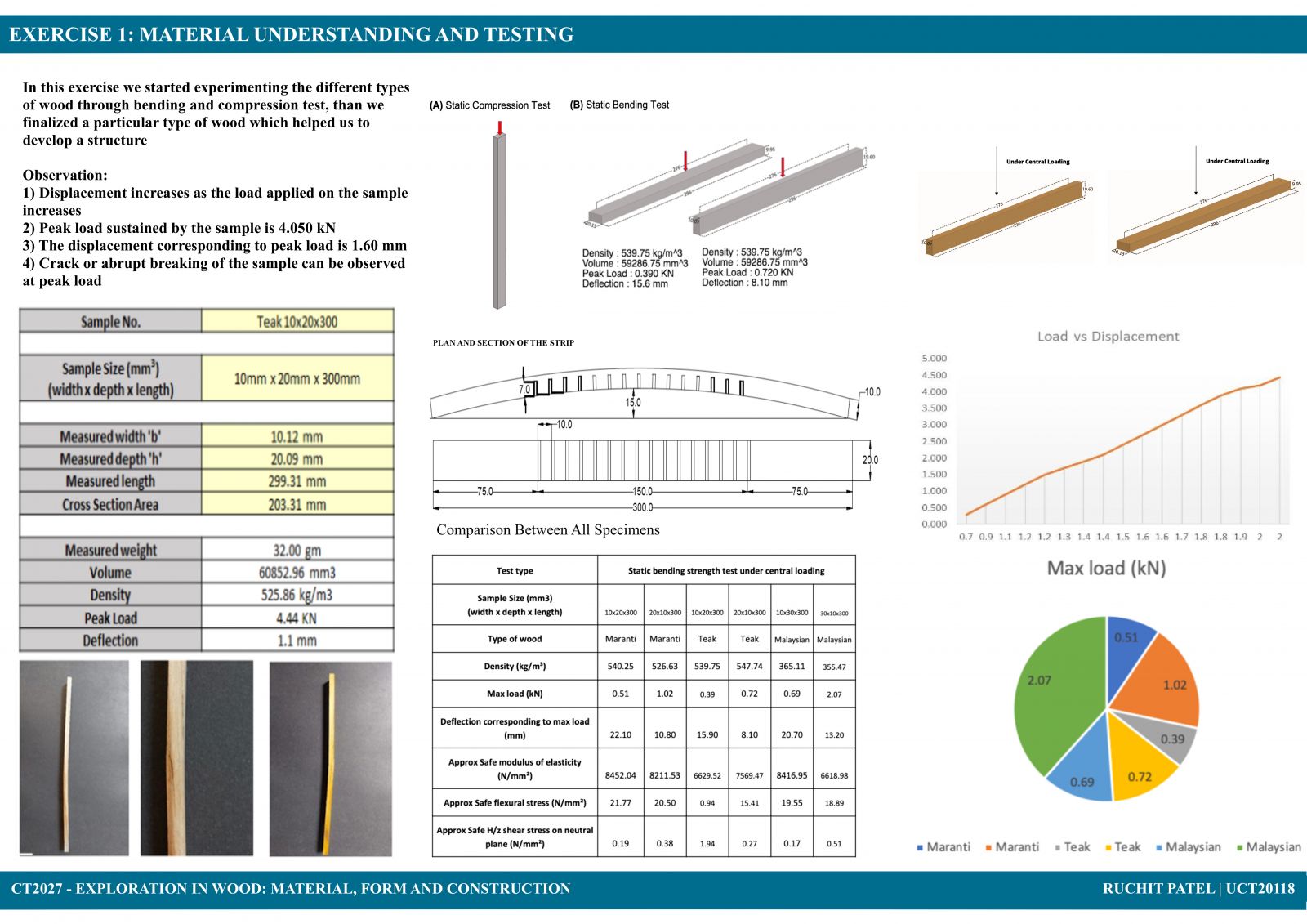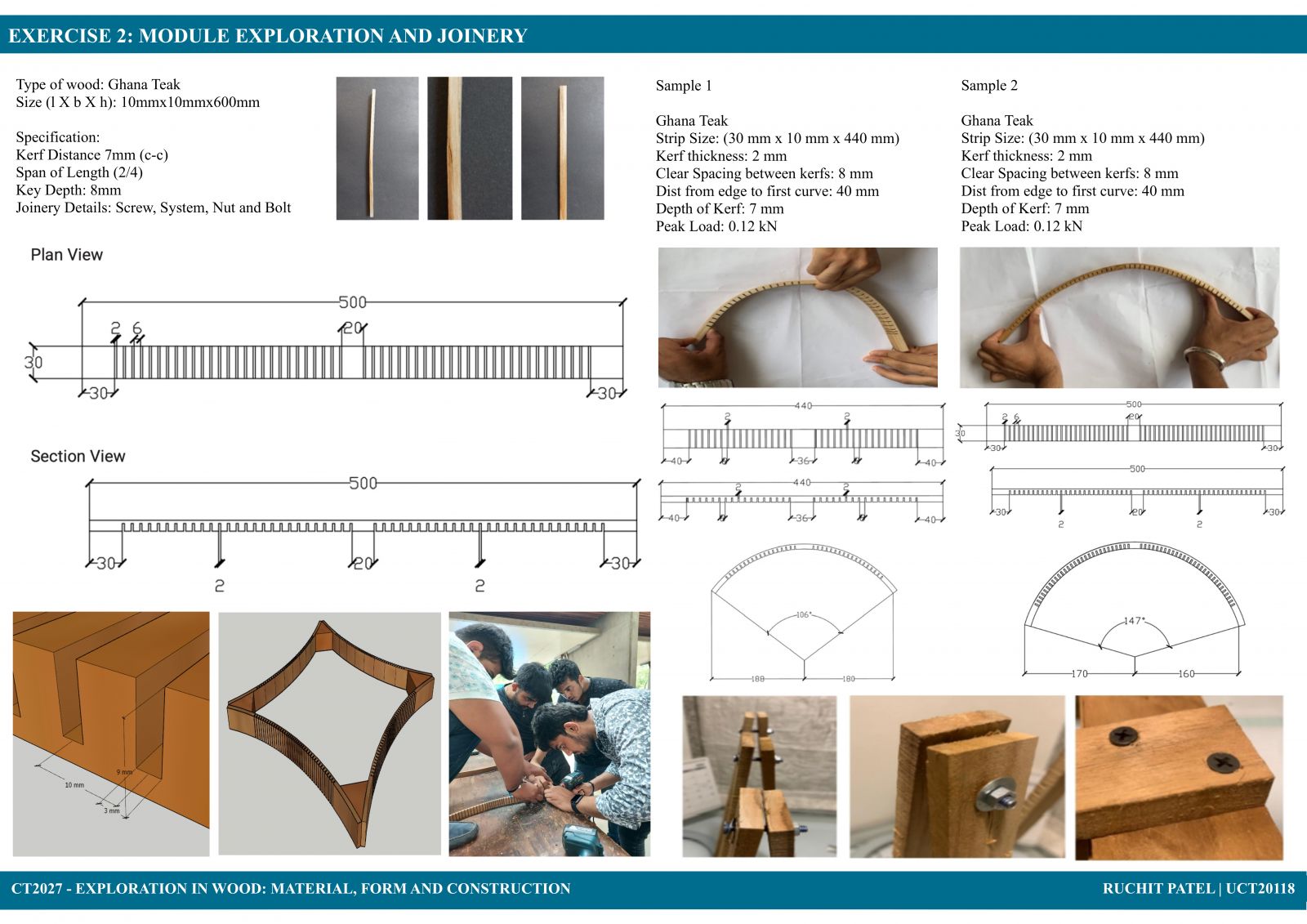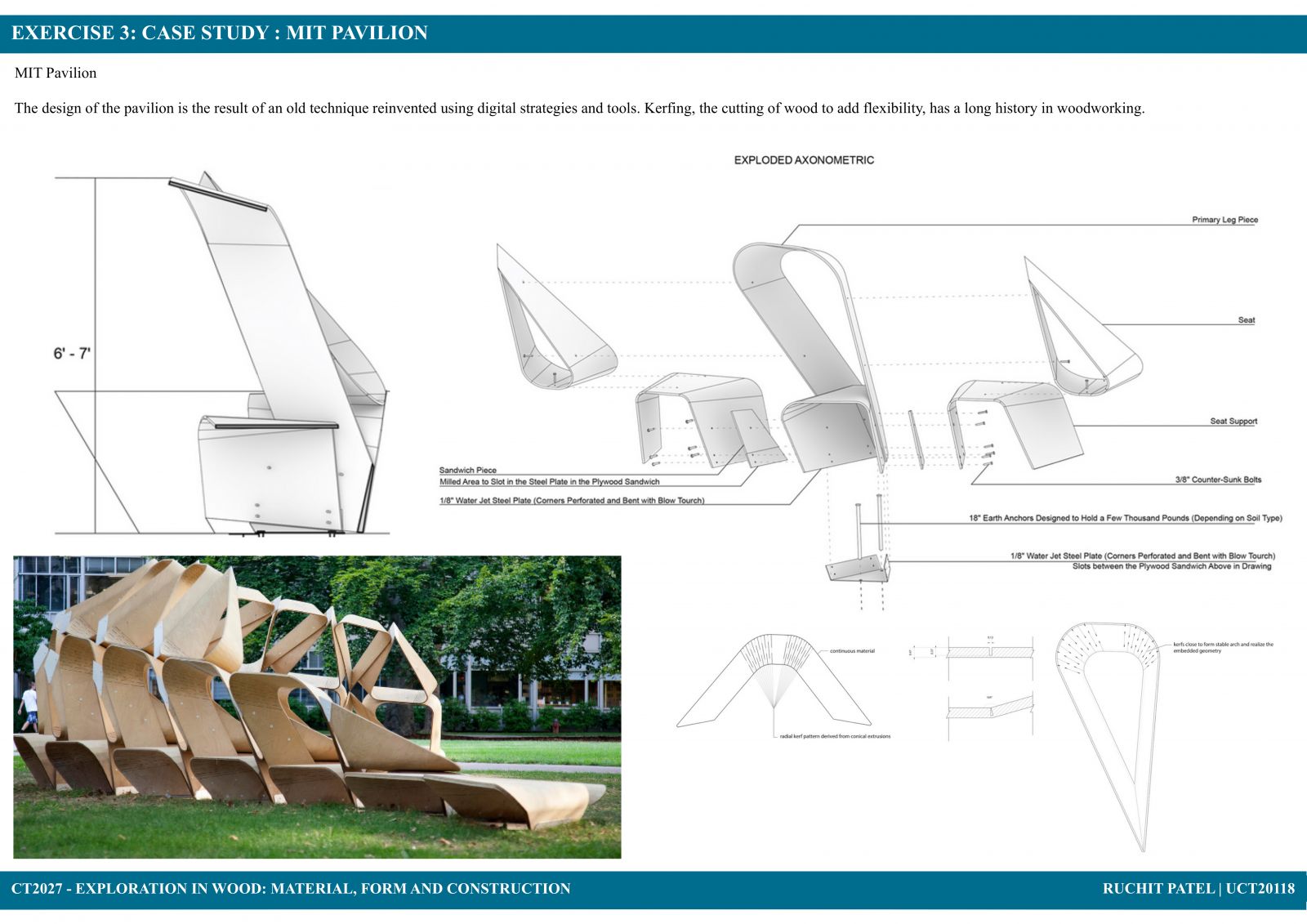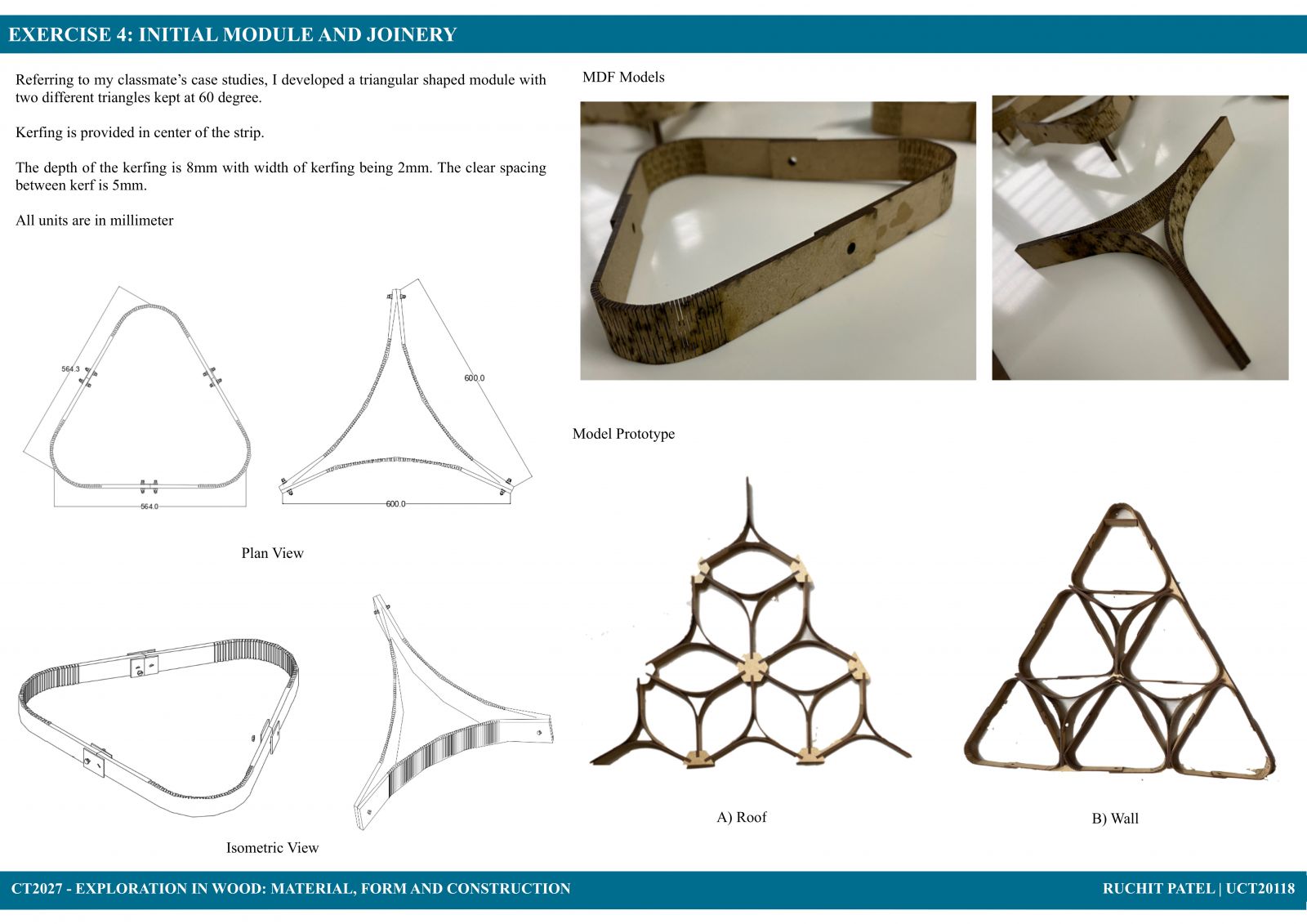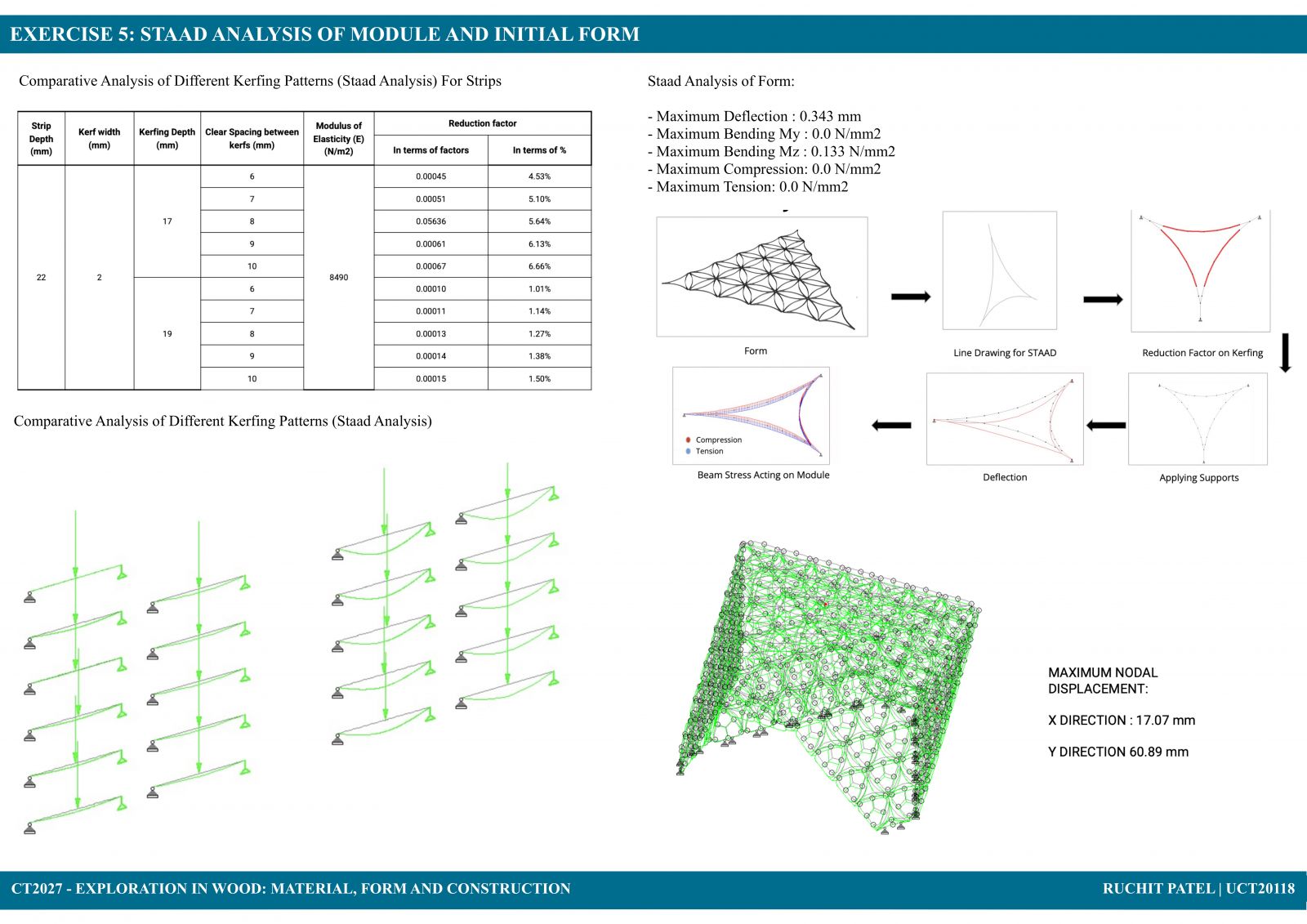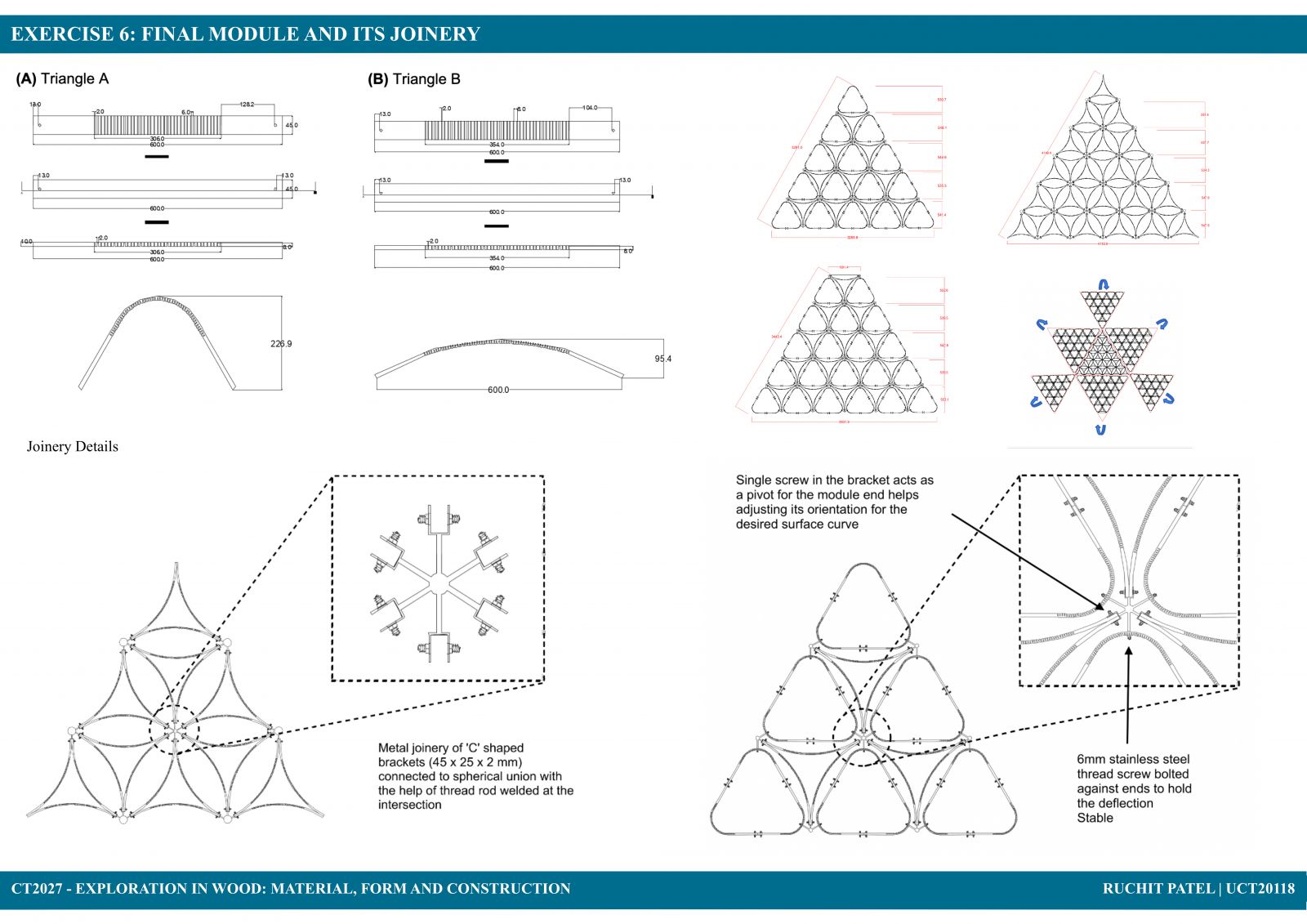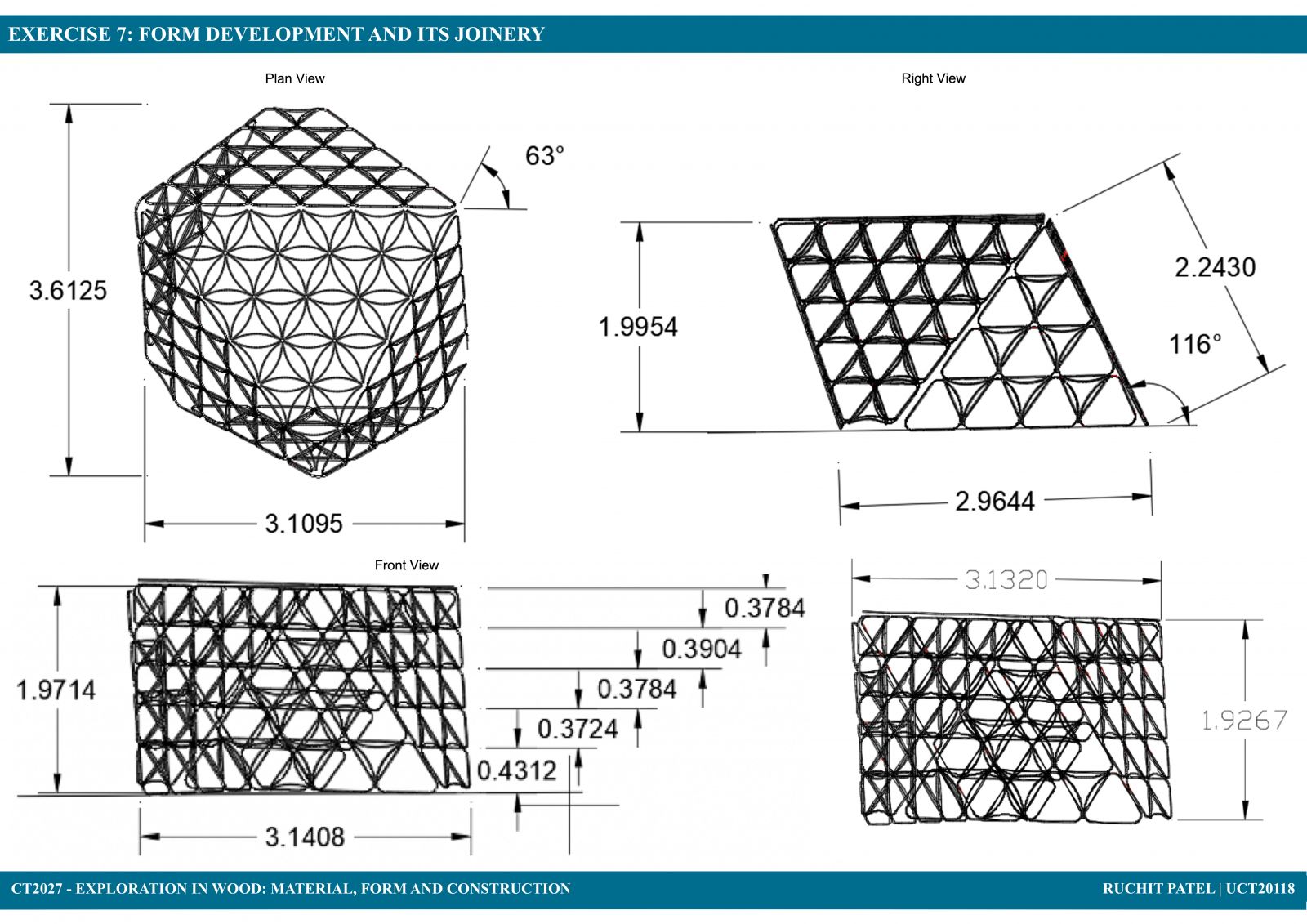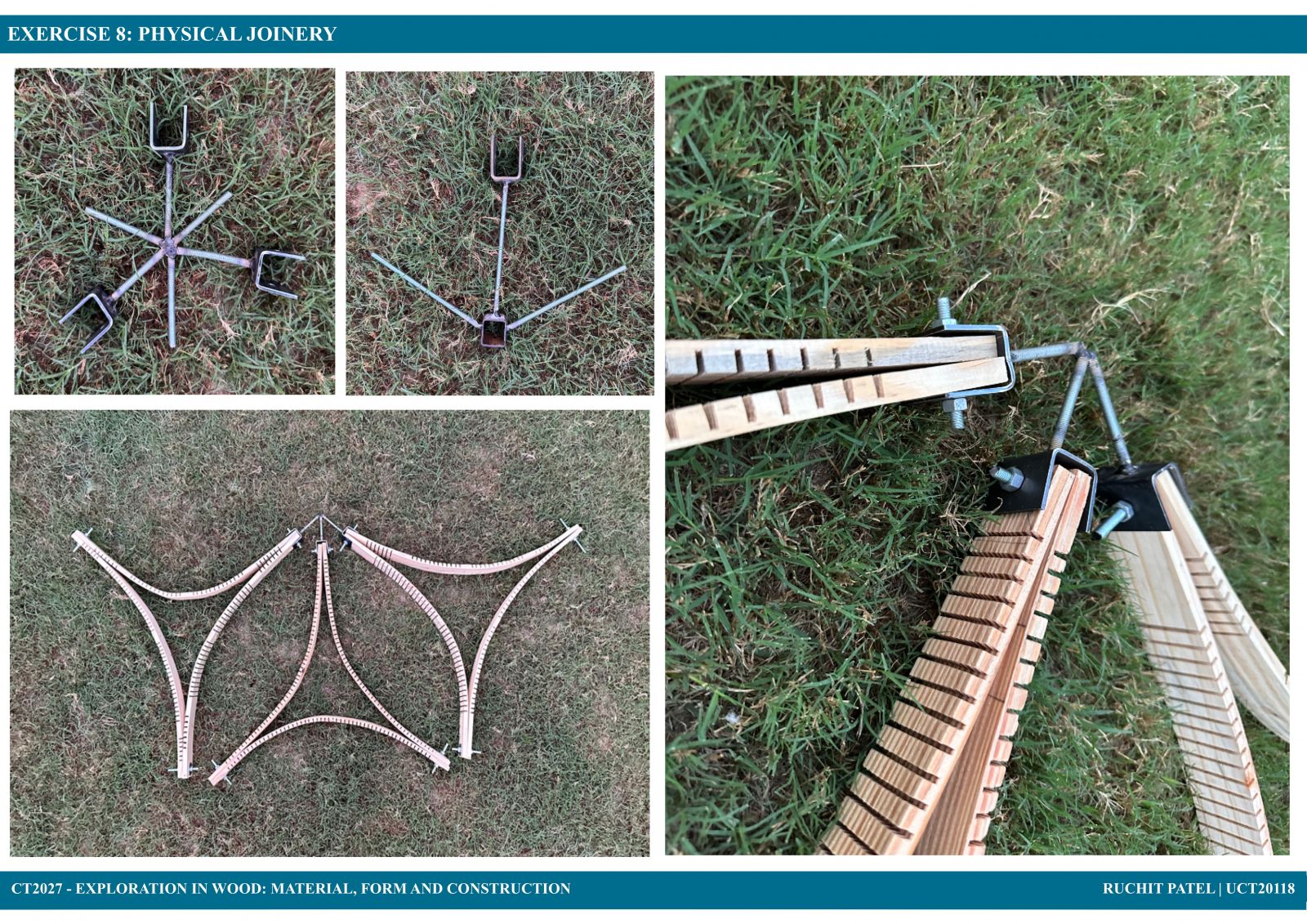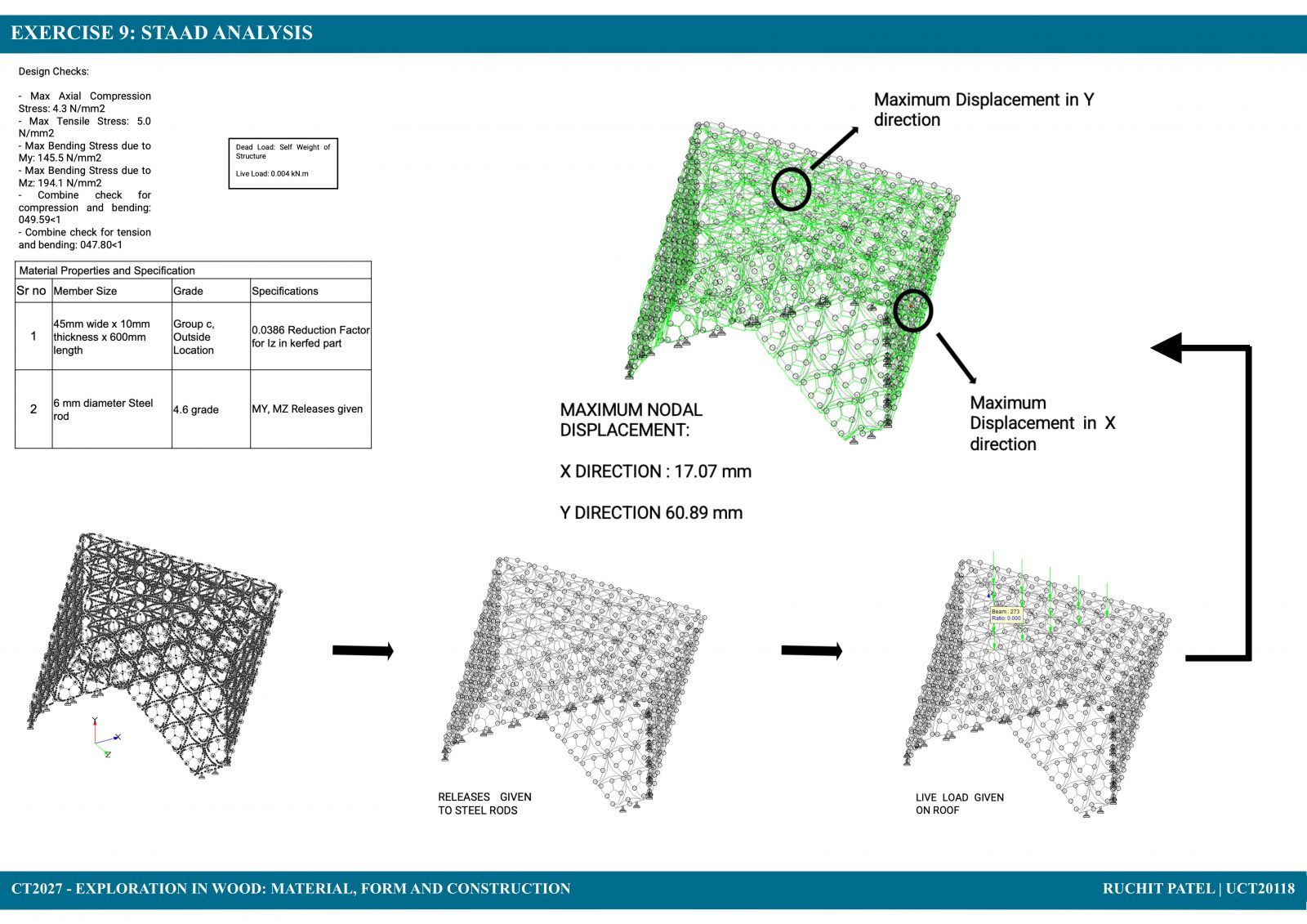Your browser is out-of-date!
For a richer surfing experience on our website, please update your browser. Update my browser now!
For a richer surfing experience on our website, please update your browser. Update my browser now!
Wood being a renewable material, has been used in construction since a long time. Over time various construction processes and techniques have been developed to test the material for its strength, versatility, load bearing and structural capacity. Wood kerfing is one such process where the anisotropic property of the material is utilized to achieve steam free, bent wooden members. Through this process the material perpendicular to the main grain direction is strategically removed and the wood plate is bent without compromising the overall structural capacity. Complex structures can be developed by further testing, observing, and analysing the reaction of these members under various stresses. The studio thus intends to integrate computational tools, physical, digital methods of design and testing to explore the anisotropic properties of wood and kerfing as a method of construction to develop complex structures. The studio will be divided into 3 modules. The first module – Exploration: intends to understand the structural strength and mechanical properties of the material by employing various theoretical, physical, and digital methods of testing. Basic understanding of mechanical properties of solids such as direct and bending stresses, shear stresses, torsional stresses etc. will be discussed. Further, it intends to understand the co-relation between the material properties and kerfing patterns to test wood for its flexibility and develop various modules. The second module – Application: intends to understand the relation between material, form technology, and construction by developing forms within the given context. Further it intends to test the form for its structural stability. The third module - Execution: intends to construct and test the prototypes. Further, it intends to construct the selected form at 1:1 scale.
View Additional Work